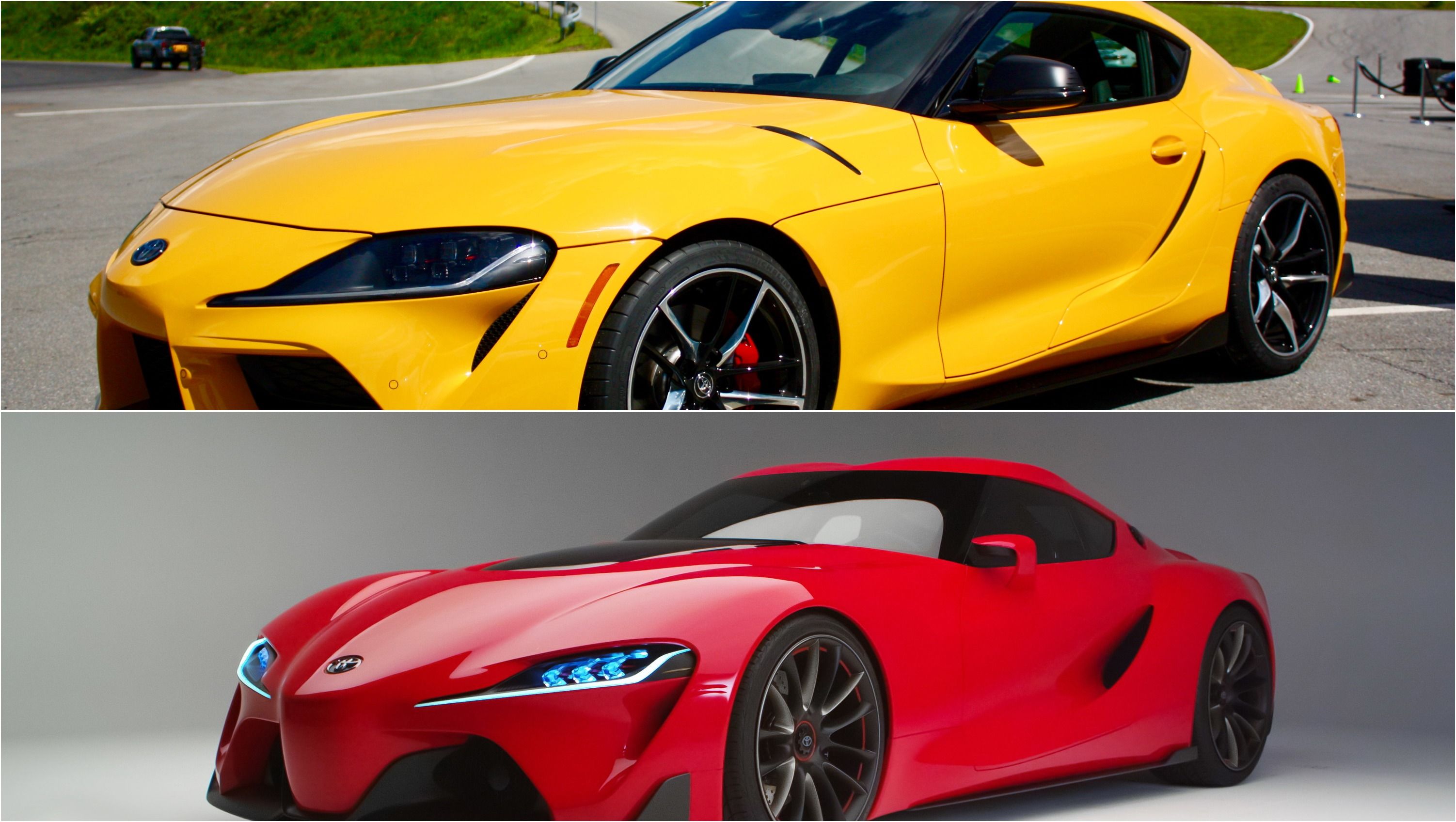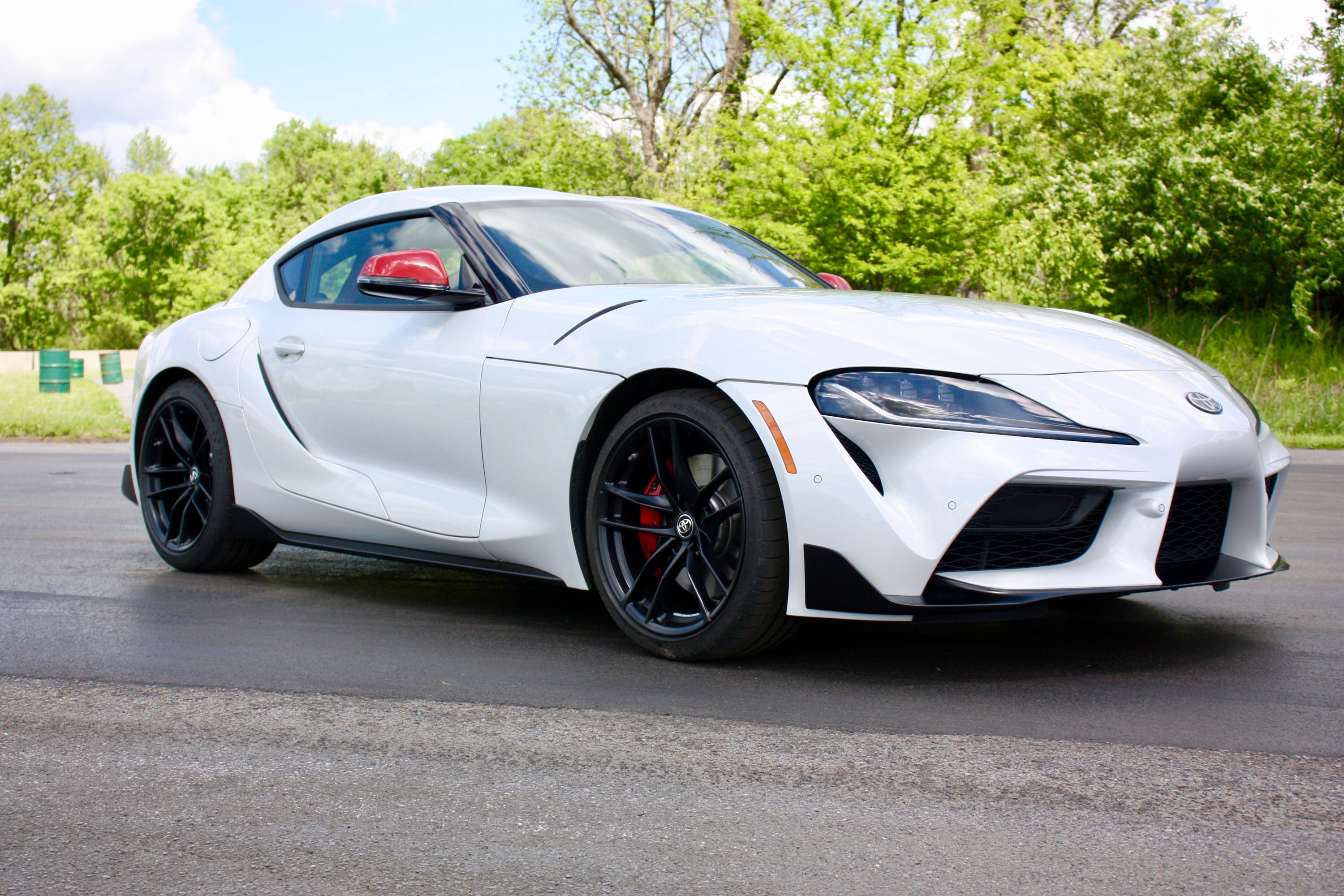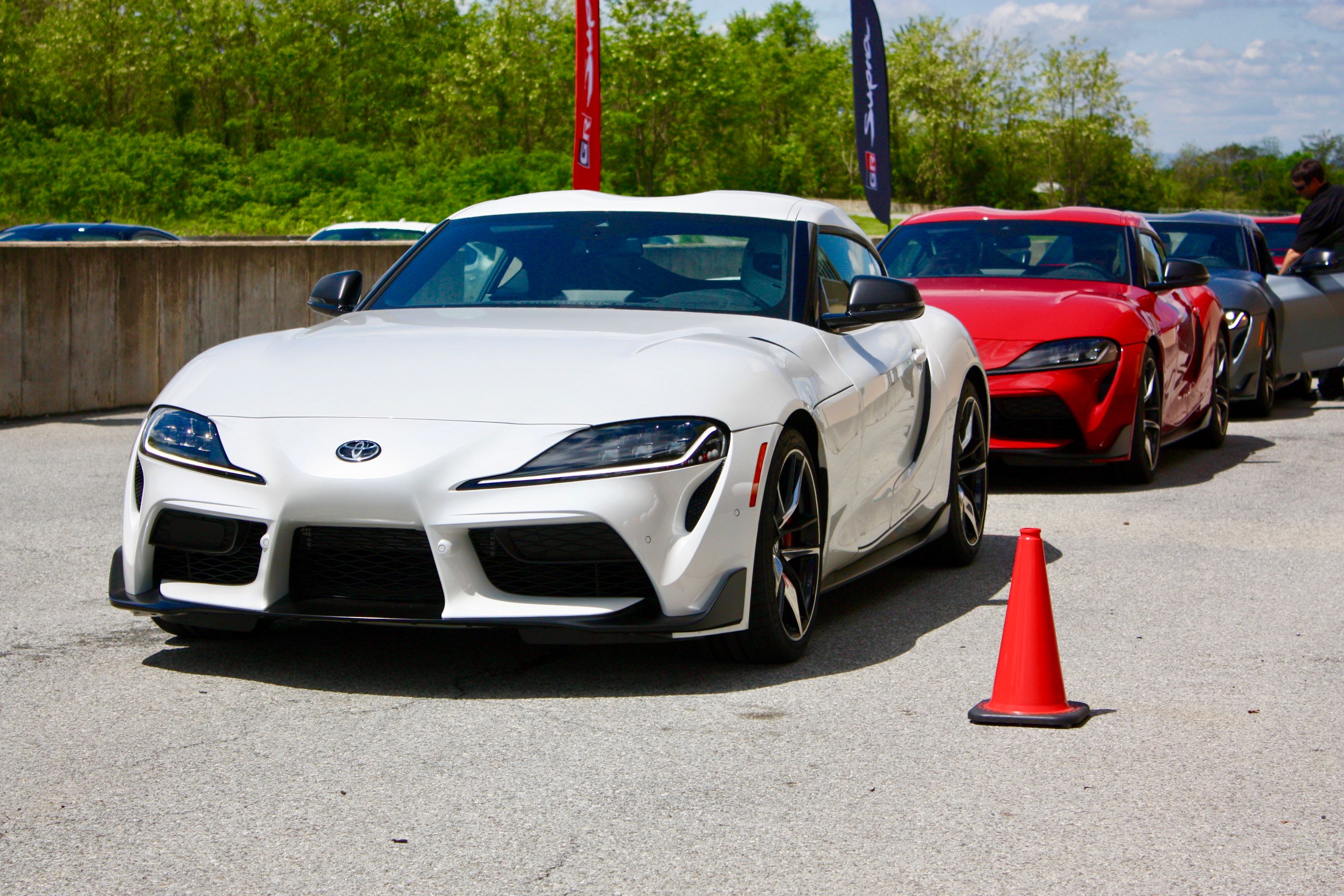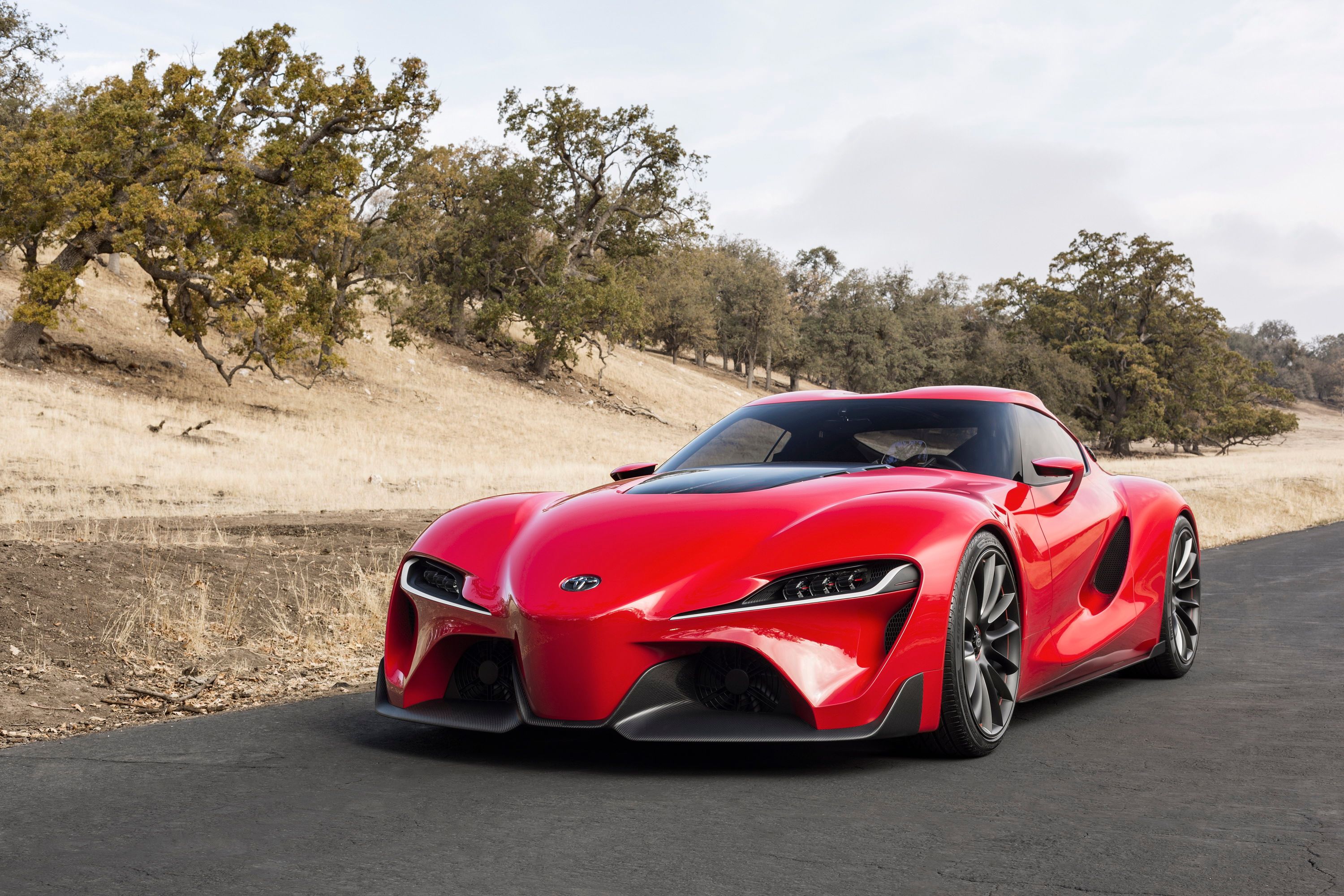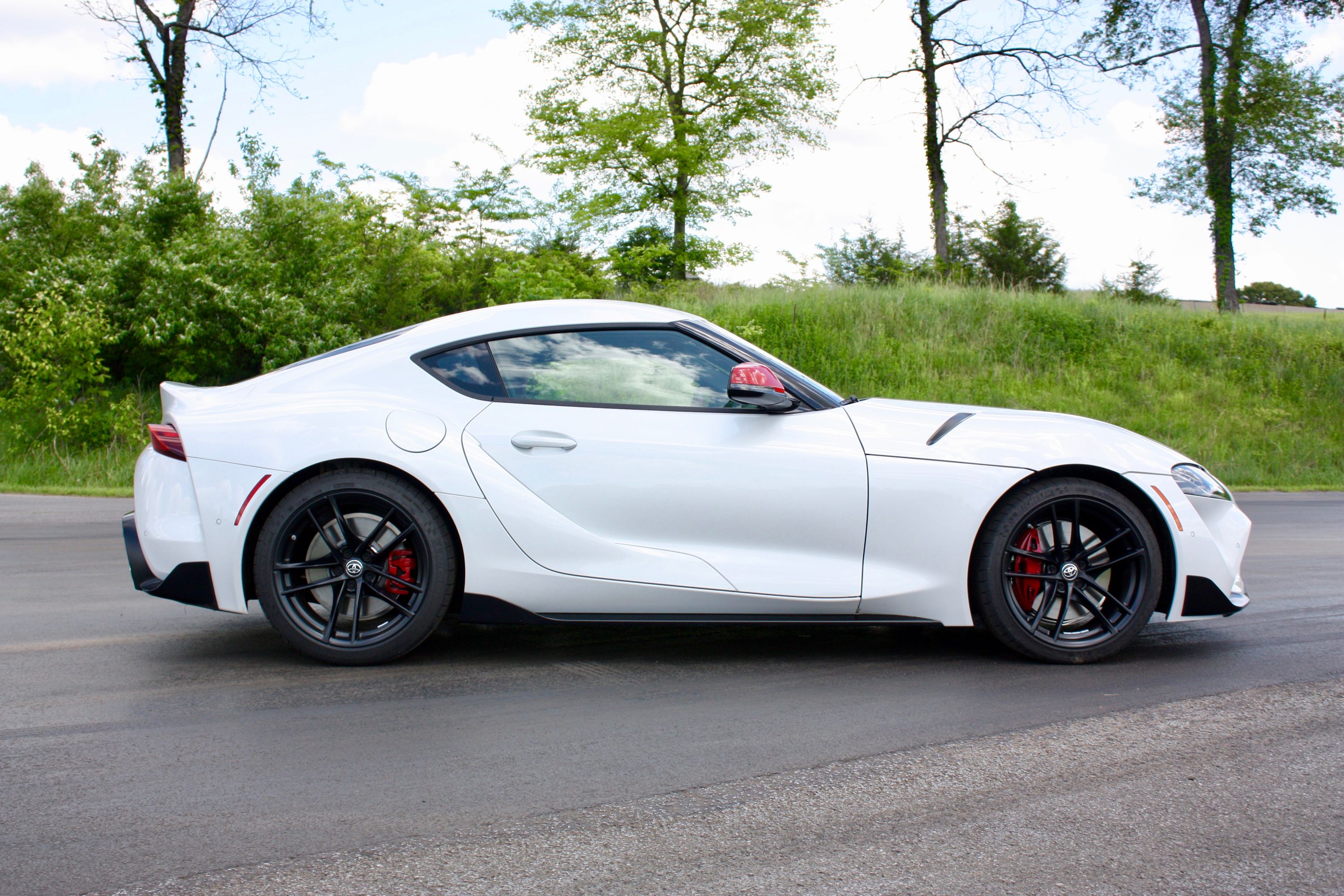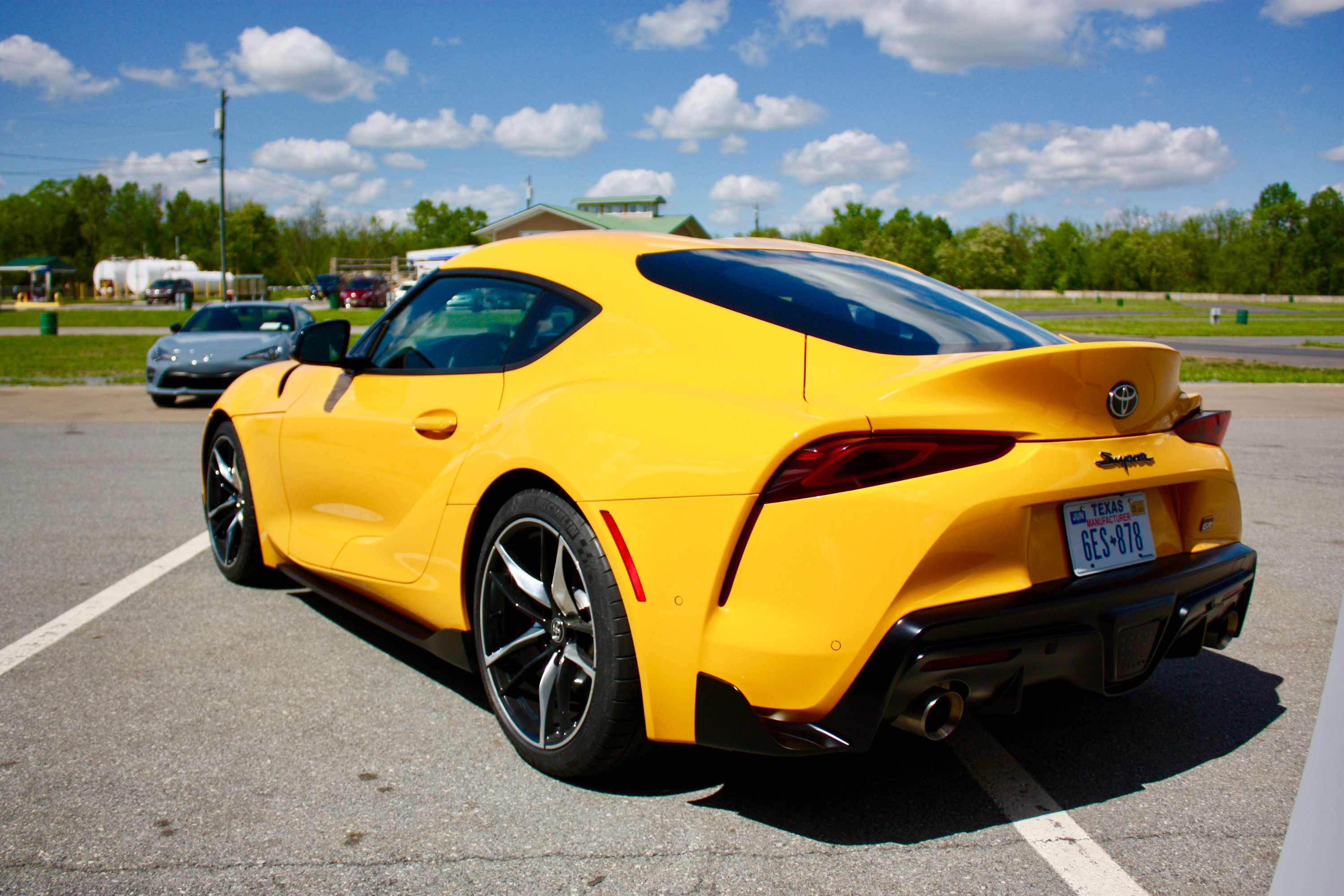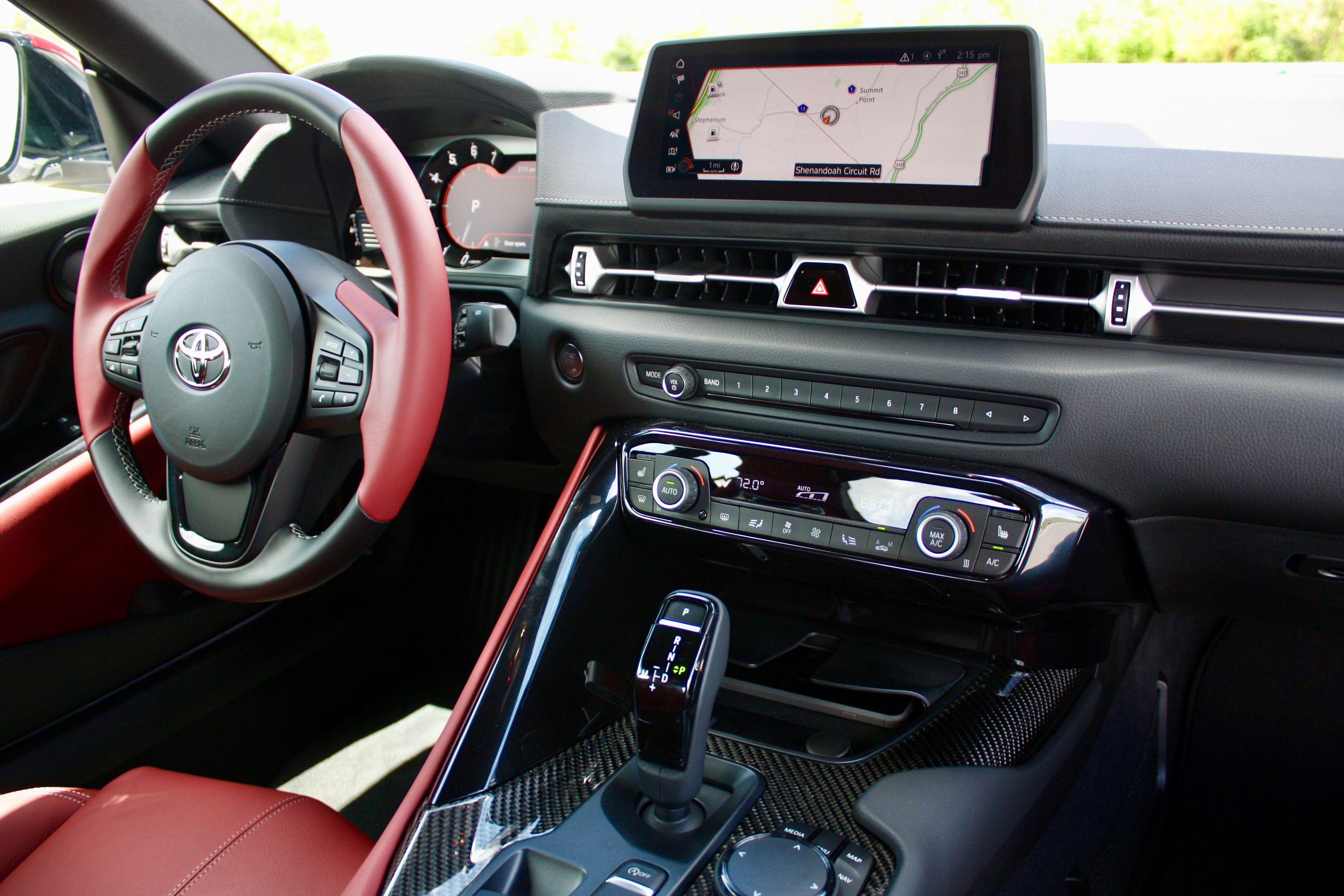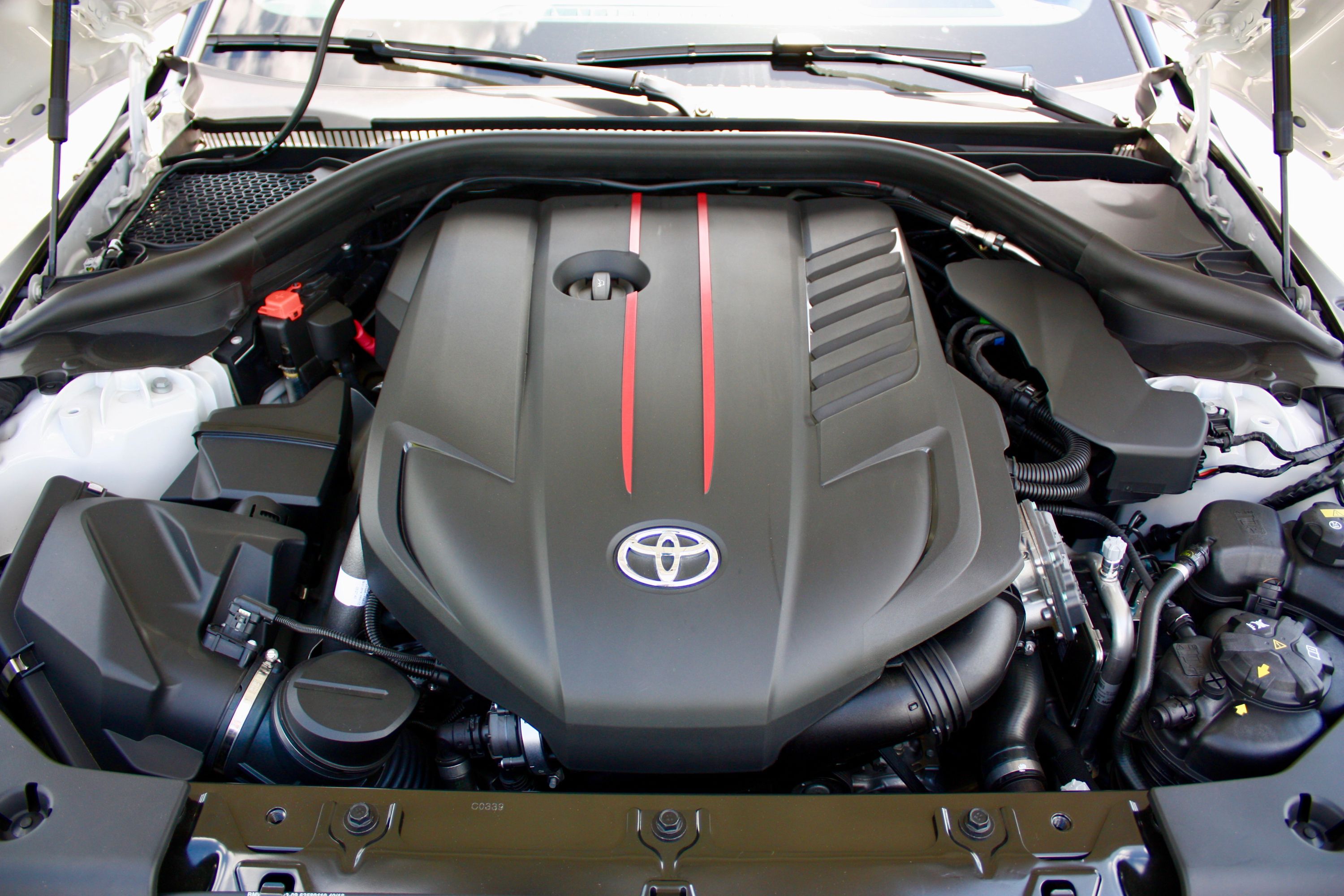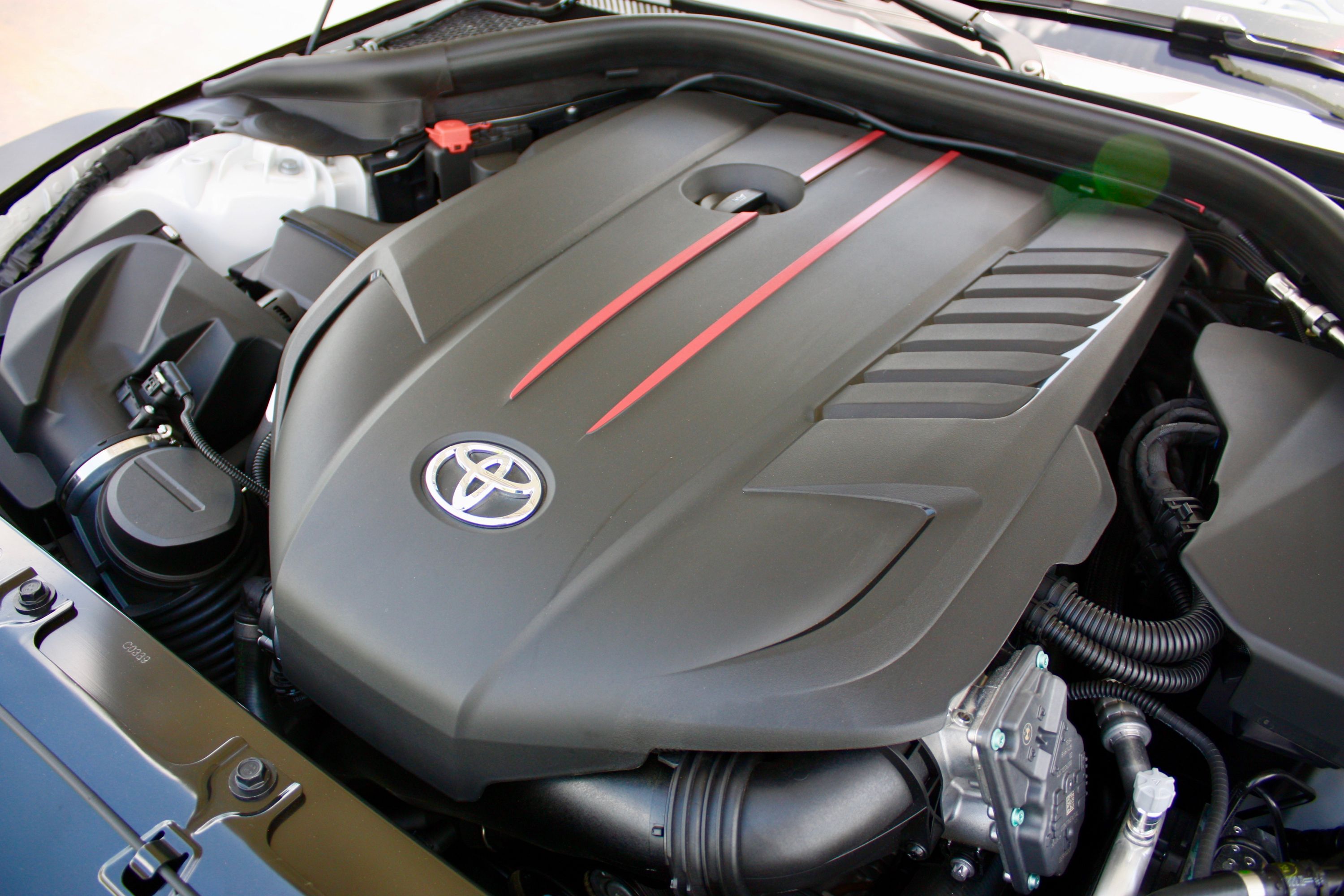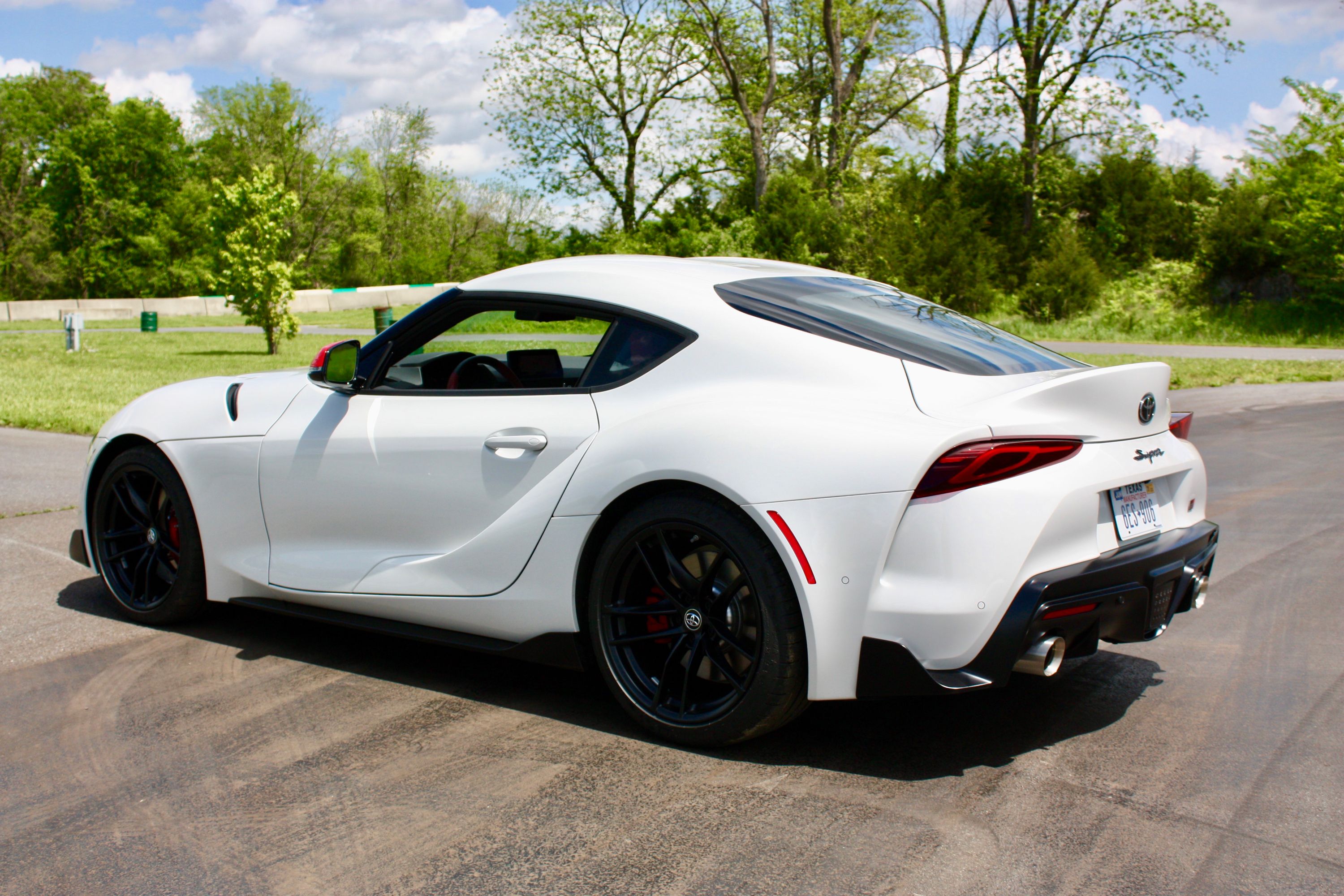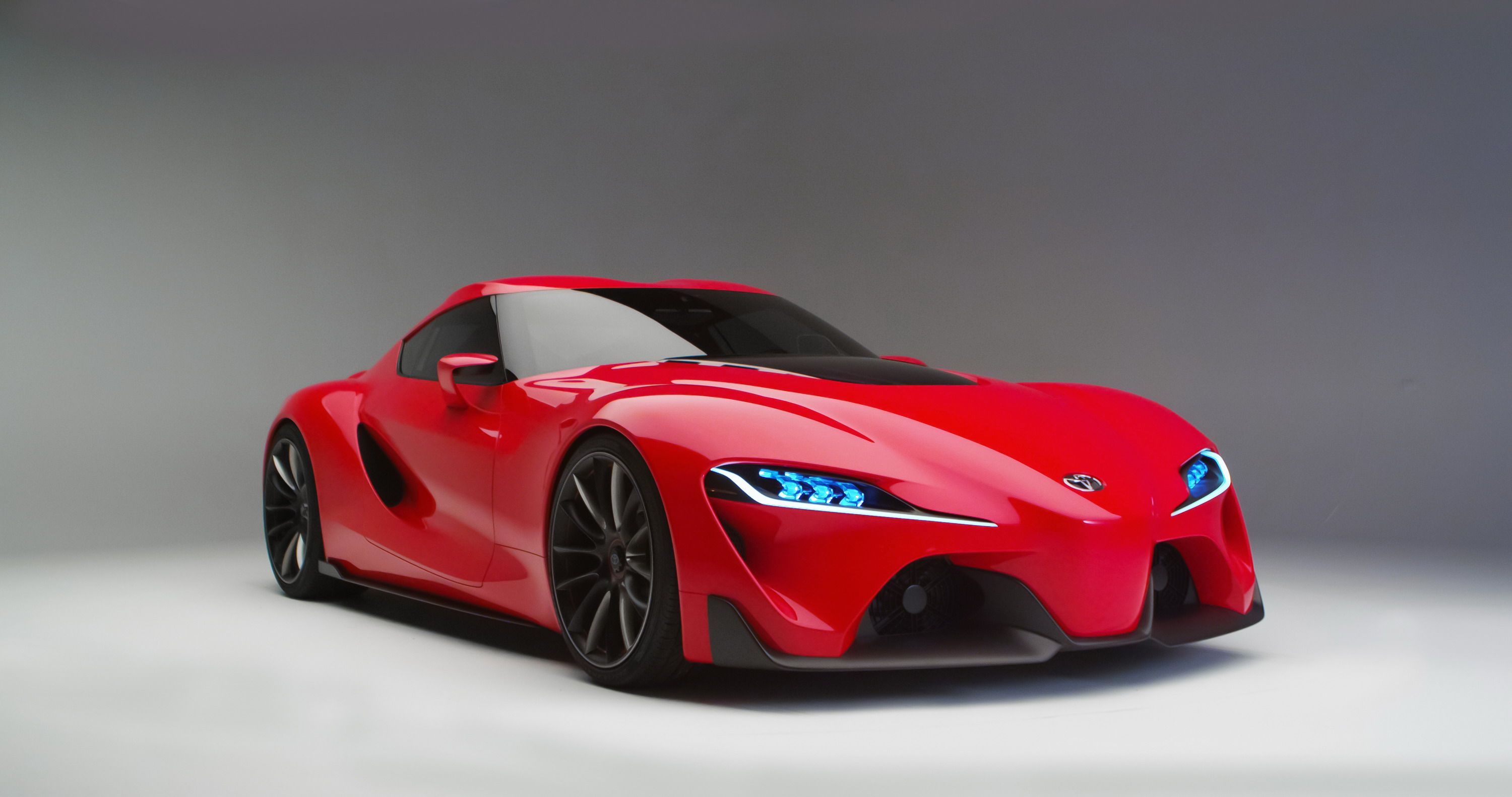The arrival of the Toyota Supra earlier this year marked the culmination of year’s worth of development from Toyota. Most people forget this now, but word of the Supra’s revival goes all the way back to 2007 when Toyota unveiled the FT-HS Concept at the 2007 North American International Auto Show. That never materialized, but it also didn’t stop the speculation surrounding the Supra’s fate, especially when Toyota filed a trademark for the “Supra” name back in 2010. Then, in 2014, Toyota debuted the FT-1 Concept at the same show as the FT-HS Concept seven years before. For all intents and purposes, the FT-1’s arrival kick-started the development of the new Supra. Toyota and BMW worked together on the development of the sports car alongside the latter’s Z4 Roadster. It took some time, but after five years, the world finally saw the production Supra at this year’s NAIAs. As expected, a lot of what made the new Supra what it is today can be tied back to the FT-1 Concept from five years ago. How much, exactly? Let’s find out.
Exterior
For all intents and purposes, the Toyota FT-1 Concept burst into the scene at the 2014 North American International Auto Show. But the seeds of what eventually became the concept were planted much earlier — two years earlier, in fact. This happened in March 2012, just as Toyota and BMW were tying the knot on a marriage that would result in two children: the Toyota Supra and the BMW Z4 Roadster. According to Motor Trend, it was around that same time when Kevin Hunter, president of Calty Design Research, casually proposed rough sketches of a sports car to his boss, Tokuo Fukuichi, in Japan. Impressed by what Hunter had done, Fukuichi, who is now a Toyota managing officer, reached out to Toyota’s head honcho, Akio Toyoda, who, in turn, gave the nod to create a concept car based on Hunter’s designs. Two years later, the Toyota FT-1 Concept arrived at the 2014 NAIAs, and the road that led to the return of the Supra was set.
This is an important story to consider when we’re talking about the new Supra. Sure, Toyota had plans of bringing it back earlier, but those plans never got off the ground. Part of it was due to the arrival of the 86, but for the most part, Toyota always came up with reasons not to really push forward with its plans. But just as it is with life; when lightning hits a bottle, you run away with it. The design house’s original idea for the Supra may not have bigger the reason for the return of the Supra — Toyota and BMW were already engaged in high-level meetings determining how to proceed with the development of its two sports cars — but it certainly helped push those plans along.
Five years later, the all-new Toyota Supra has arrived, Sure, not everything about the FT-1 Concept ended up on the actual production model, but you don’t need to be Sherlock Holmes to determine that the Supra’s roots trace back to the concept that came together in a pretty remarkable way.
Front
|
|
ids=838570,838571 |
no_overlay=false |
before_label=2020 Toyota Supra |
after_label=2014 Toyota FT-1 Concept> |
It’s never easy when an automaker transitions the looks of a concept car and turn it into a production model. Part of the challenge involves giving the production model a look of its own while also picking certain design elements from the concept to achieve that look.
Side
|
|
ids=838572,838573 |
no_overlay=false |
before_label=2020 Toyota Supra |
after_label=2014 Toyota FT-1 Concept> |
Unfortunately, a lot of people don’t share my sentiment. Most aren’t fans of the front side vents on the hood — lifted from the FT-1, by the way — and the side scoops mounted near the edge of the doors because they lead nowhere. I just think they’re necessary in order to maintain the stylistic integrity that Toyota wanted out of the Supra. Perhaps Toyota could’ve done something different, but I’m not as upset about as some people are. The rest of the two model’s respective side profiles provides more differences than similarities. The Supra’s curated body line isn’t as striking as the concept’s body line, which aggressively cuts across the doors, stretching from the front fender to its rear counterpart. Even the rear fender on the production model is rounder than the one on the concept.
Rear
|
|
ids=838574,838575 |
no_overlay=false |
before_label=2020 Toyota Supra |
after_label=2014 Toyota FT-1 Concept> |
Speaking of the taillights, a pair of rear vents connect to the tips of the lights. They’re not as gaping as the ones found on the FT-1 Concept, but they are similarly positioned. It’s just too bad that they’re not real, too. Just below the Supra’s rear bumper is an elaborate diffuser that’s integrated with the brake lights and a pair of exhaust tips. This is another different take on the FT-1 Concept, which featured tailpipes integrated into the rear bumper. It’s hard to tell which section of the Supra has the best design, but I wouldn’t begrudge anyone who says that the rear section has the best look. Toyota certainly did a good job blending designs from the concept and adding a little design panache of its own, all while paying tribute to the last Supra that hit the road almost two decades ago.
Interior
|
|
ids=838576,838577 |
no_overlay=false |
before_label=2020 Toyota Supra |
after_label=2014 Toyota FT-1 Concept> |
Comparing the interior of the Toyota Supra and the Toyota FT-1 Concept seems unfair. One completely stands out over the other, although, to be fair, Toyota probably had very little choice about it. To put it in simpler terms: the FT-1 Concept’s interior is probably its greatest asset while the Supra’s interior is probably its worst feature.
Speaking of which, there’s an absence of color in the Supra’s interior, something that isn’t a problem in the FT-1. You can opt to score red leather on the Supra, either as an add-on or if you buy the Absolute Zero White and Nocturnal Black versions of the Supra Launch Editions. Even then, Toyota should’ve made more of an effort in injecting a bit of color in the interior of the Supra and not leave it to a tiny red stripe on the door panel and the seat-belt release buttons. Buyers aren’t supposed to pay more for something like this.
Drivetrain & Performance
The Toyota Supra is available with a number of engine options, but if you’re in the U.S., you only need to concern yourself with one: the 3.0-liter turbocharged inline-six engine that it shares with the BMW Z4 Roadster. This engine produces 335 horsepower and 365 pound-feet of torque. It connects to an eight-speed automatic transmission, which, in turn, sends power to the coupe’s two rear wheels. Without any hiccups, the Supra is capable of sprinting from 0 to 60 mph in 4.1 seconds, though that likely comes with the sports car’s launch control feature. Still, it’s an impressive mark for a production model, even if it is 0.2 seconds slower than the U.S.-spec BMW Z4, which can hit the same mark in just 3.9 seconds owing largely to its higher output of 382 horsepower.
The 3.0-liter turbo six engine is the only powertrain available to U.S.-spec Supras. There are rumors that a smaller four-cylinder engine could arrive in the future, but that isn’t set in stone yet. The good news, at least for those who don’t live in America, is that there are engine options for the Supra in other markets, including the aforementioned 2.0-liter four-cylinder engine that produces a rather pedestrian 197 horsepower and 236 pound-feet of torque. The lack of power manifests itself in the car’s performance times, too, none more glaring than its 0-to-62-mph time of 6.5 seconds. Still, it’s an engine option that’s available to the Supra in other markets, something that we can’t say for the U.S.-spec models.
I don’t blame Toyota — or even BMW — for any of this. I think that a 335-horsepower Supra is solid enough, mostly because it leaves enough room for the Japanese automaker to make more powerful versions down the road. If Toyota had started out with a V-6 engine that produced 400 to 500 ponies, there wouldn’t be enough room for a more potent Supra without thinking of it as an actual supercar.
Final Thoughts
Expecting a production car to look as good as the concept from which it’s based on is a difficult proposition. The production car almost always doesn’t live up to the concept, and that’s the case here. In terms of design, the FT-1 Concept looks much better than the production Supra. There’s no going around that. But this isn’t an indictment on the Supra’s design more than it is a celebration of what the Calty Design Research studio was able to create with the FT-1 Concept. Five years after its debut, the FT-1 still looks stunning. There’s a timeless aesthetic quality to it that doesn’t get old, no matter how many times you see it. Perhaps that’s one of the more important reasons why Toyota’s ultimate decision-makers decided to build it quickly. The FT-1 is one of the best concept cars we’ve seen this decade that gave birth to a future production model. As far as the production Supra goes, it’s not a bad-looking car. It actually has a lot of aesthetic merits to it. The fastback profile is tremendous, and the integration of the rear spoiler is a nice touch as well. The front section has a few sexy design qualities, and the side profile meets our expectations on what the Supra should look like from this angle. But the concept is still the better-looking vehicle of the two. It just is.
Further Reading
Read our review of the 2020 Toyota Supra
Read our full review on the 2014 Toyota FT-1 Concept.
How Much BMW DNA Can Be Found In The 2020 Toyota Supra?
14 Little-Know Facts About The 2020 Toyota Supra A90
Read our full review on the 2019 BMW Z4.

